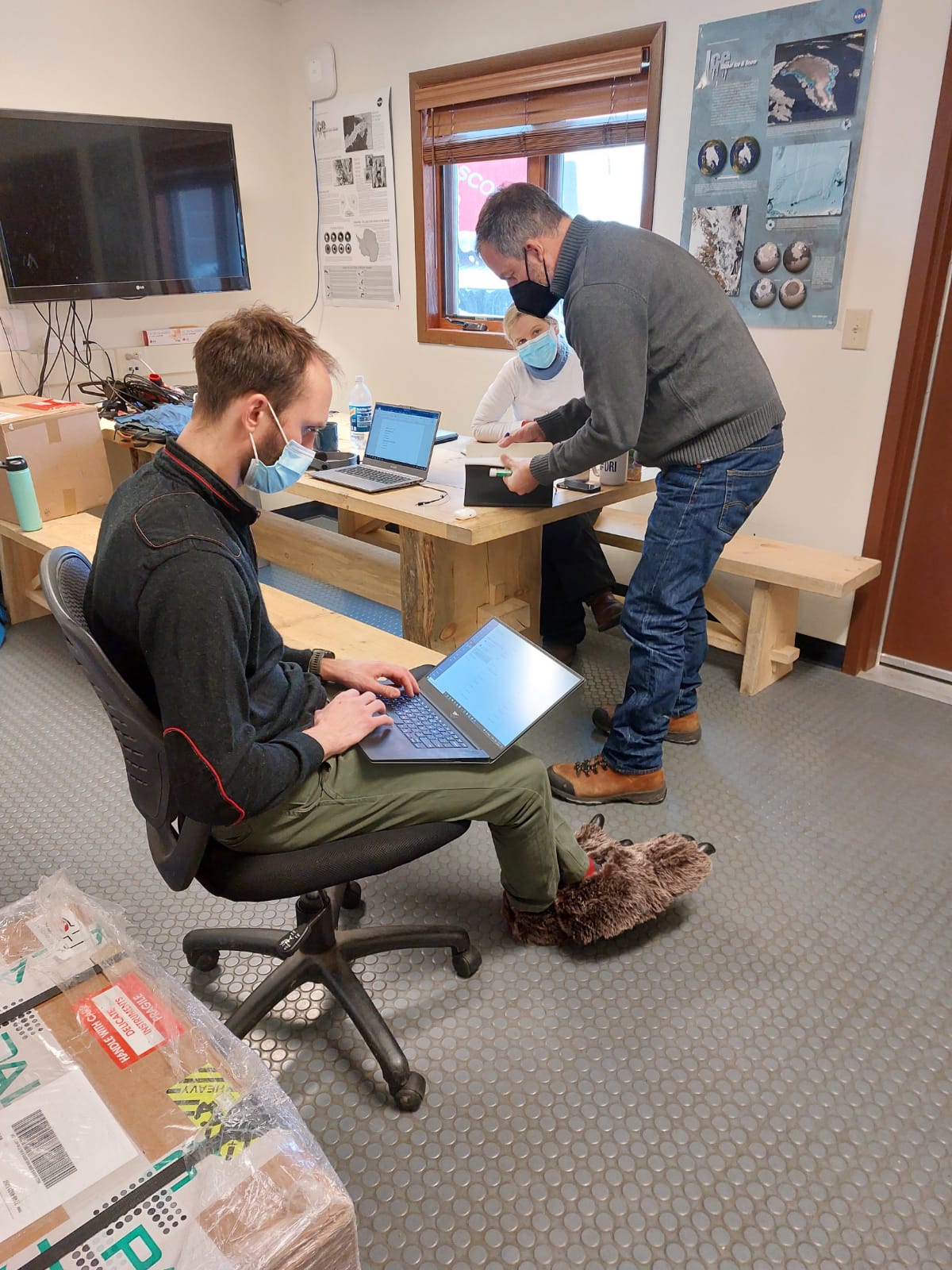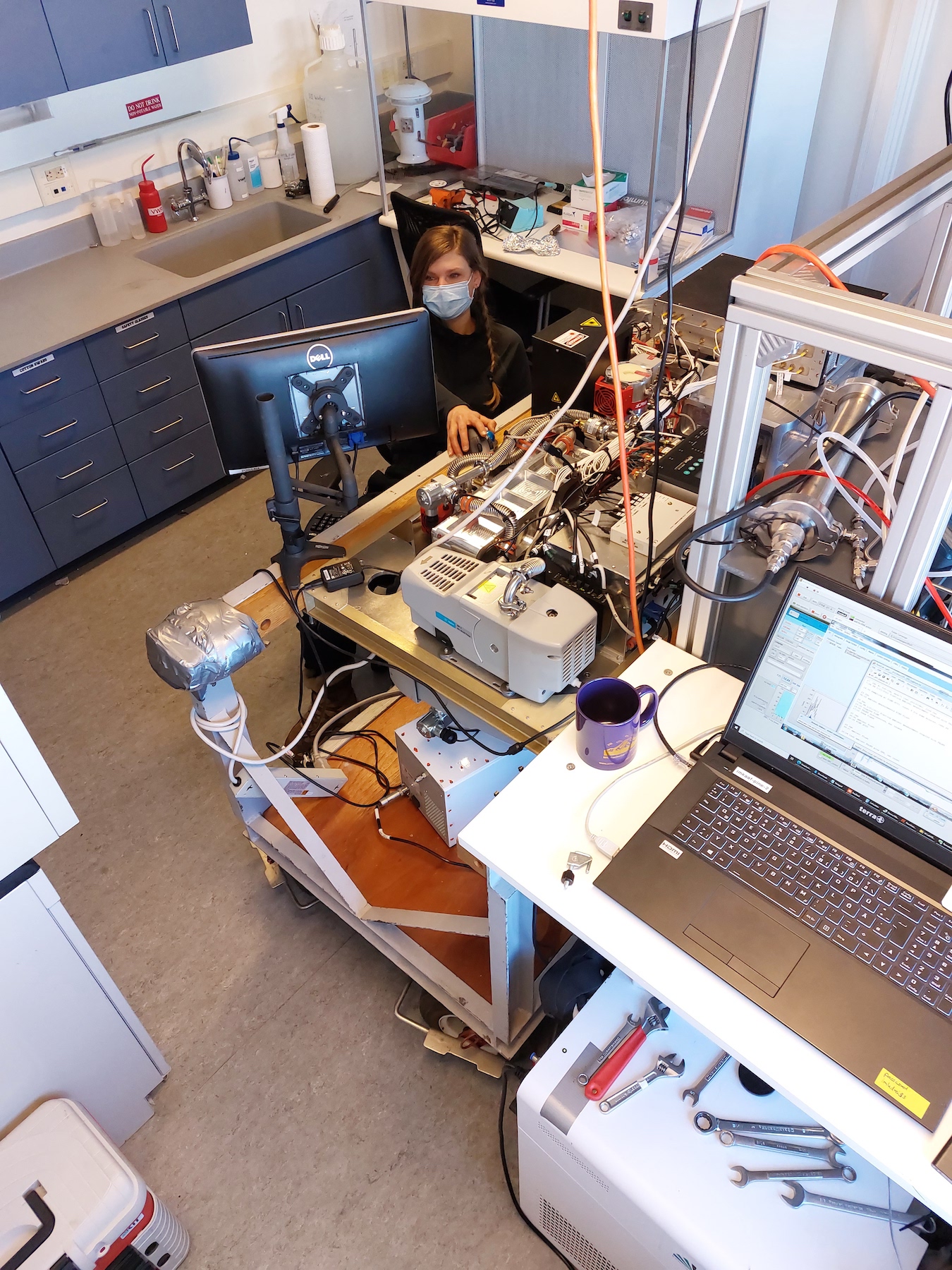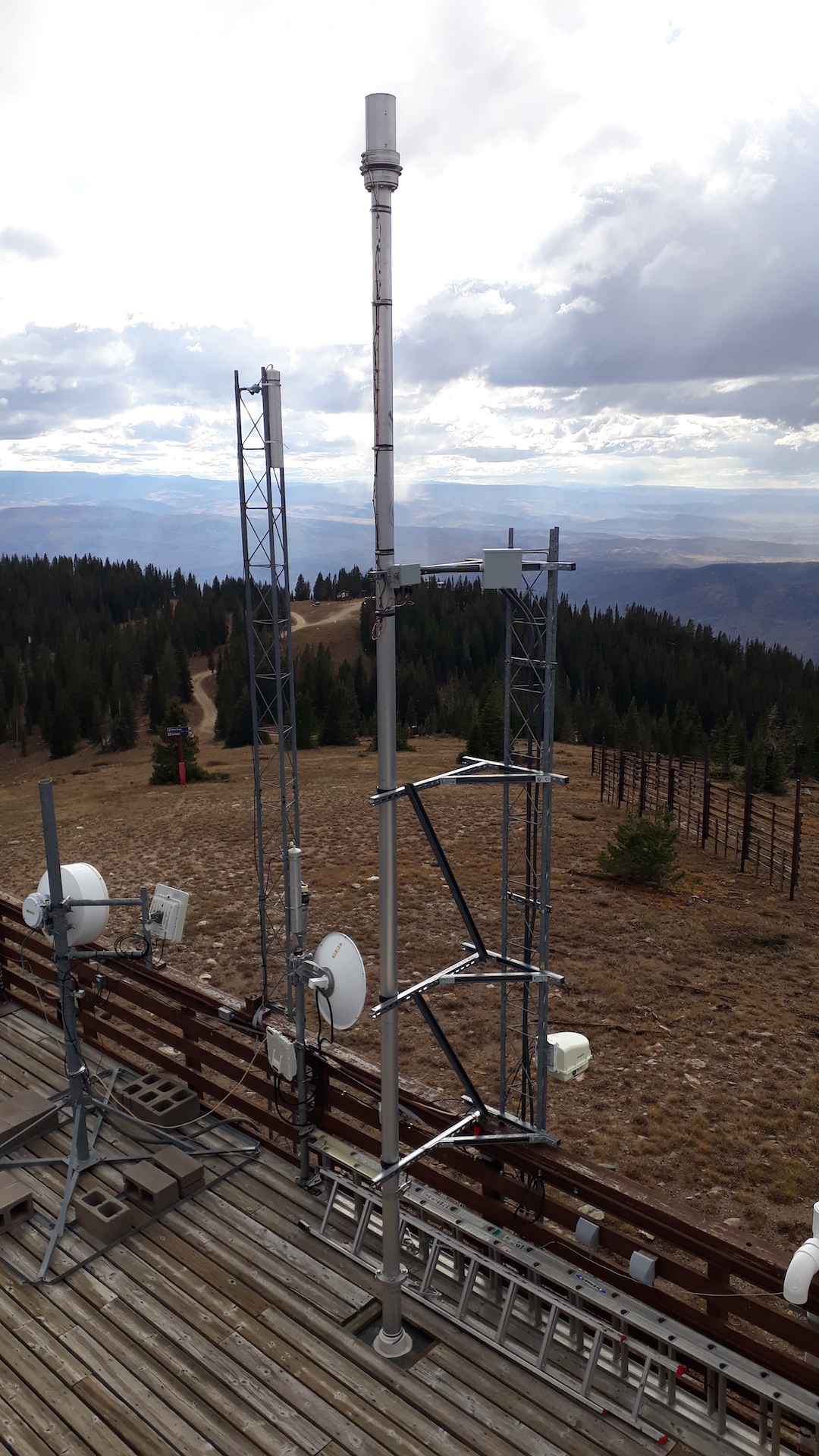SPL Research
S2noCLiME
PI: Claire Petersen, University of Michigan
Snowfall that is enhanced by rising motion due to mountainous terrain, known as orographic
snowfall, is crucial to the high-altitude snowpack that provides water resources and
recreational opportunities. The processes that influence the amount of orographic
snowfall are complex and there are still gaps in knowledge that impact forecasts of
snowfall and projections of snow in future climate states. This field campaign used
a set of advanced remote sensing and ground-based instruments to collect a comprehensive
dataset that can be used to answer key remaining questions. The broader impact on
society from the project is largely related to water resources, and the research team
plans to share results with water resource managers, agricultural planners, farmers,
ranchers, and the local communities. Education and outreach included visits and balloon
launches at schools, inclusion of data in classroom activities, creating scientific
color books, and training at the undergraduate, graduate, and postdoctoral levels.
The Snow Sensitivity to Clouds in a Mountain Environment (S2noCLiME) project deployed
a wide range of instrumentation in the Park Range of Northern Colorado to study cloud
and precipitation processes in a mountainous environment. The main observational site
was Storm Peak Laboratory. Storm Peak Laboratory is often in-cloud due to its altitude
and location on Mt. Werner, making it an ideal location for studies of aerosol, cloud,
and precipitation processes with the cohort of instruments there. The campaign also
included the C-band SEA-POL radar from Colorado State, the Millimeter-wavelength Radar
Facility for Cloud and Precipitation Research from Stony Brook University, and a set
of other vertically pointing radars, disdrometers, and weather balloon launches. Data
will be collected over the entire 2024-2025 winter season. The research team will
analyze the data and incorporate numerical modeling to address the two overarching
science questions:
1) How do large-scale environmental conditions and water vapor transport mechanisms
impact the characteristics of snowfall events in mountainous terrain, and how are
local cloud and precipitation processes modified by an orographic barrier?
2) How do the terrain modified cloud-aerosol interactions and cloud microphysical processes, such as the enhancement of supercooled liquid water and riming, impact the snowfall properties near the surface?
An in situ Closure Study of Mixed Phase Clouds
PIs: Dan Cziczo, Purdue University, and Gannet Hallar, University of Utah
Clouds are commonly differentiated by the precipitation that reaches the surface, either rain or snow. This means they are often thought of as being liquid water, also called warm clouds, or ice, also called cold clouds. Those clouds that contain liquid water droplets and ice crystals at the same time are called mixed phase clouds. Mixed phase clouds are currently poorly understood because of the complicated mixture. Our lack of understanding of clouds, particularly those that are mixed in phase, limits our ability to understand precipitation, the atmosphere chemistry and climate. This project will determine the particles on which the droplets and ice crystals in mixed phase clouds form by deploying a new inlet and both warm and cold cloud chambers at Storm Peak Laboratory. Storm Peak is a high altitude site located in the Rocky Mountains in north-central Colorado that is among only a handful of sites worldwide that offers scientific laboratories where mixed phase clouds exist for long time periods. Using this new inlet, the research team will carry out two-season long observational studies of droplet and ice crystals within mixed phase clouds. This project will allow a resolution of the question of which atmospheric particles make droplets, which make ice crystals, and which do not effectively make either.
Mercury Oxidation Pathways in a Continental Atmosphere: High Temporal Resolution Measurements of Mercury and Oxidants
PIs: Lynne Gratz, Colorado College; Seth Lyman, Utah State University; Rainer Volkamer, University of Colorado; Gannet Hallar, University of Utah
This project focuses on the study of atmospheric mercury. Mercury in the atmosphere
exists in the gas-phase elemental form, as gas-phase oxidized mercury compounds, and
bound to particles. The primary effort of this research will be on processes and mechanisms
that govern oxidation reactions in the remote continental atmosphere. Mercury is a
toxin that impacts neurological health and development in humans. A more thorough
understanding of the atmospheric concentrations and chemical pathways of oxidized
mercury is central to fully determining its fate.
There are three objectives to this project: (1) Generate a high-quality dataset with
accurate concentrations of elemental and oxidized mercury, halogen oxide radicals,
aerosol size distribution, and other oxidants at a remote mountaintop site over the
continental U.S.; (2) Identify the chemical mechanisms and physical processes that
influence elemental and oxidized mercury in the free troposphere and the planetary
boundary layer air masses; and (3) Bolster existing long-term measurements at Storm
Peak Laboratory (e.g., to inform sources of new particle formation) and facilitate
dialogue with researchers at other mountain observatories by sharing data analysis
tools and expertise on best practices for sampling oxidized mercury, nanoparticles,
and halogens from high elevation ground-based platforms.
STORMVEx
The U.S. Department of Energy deployed the second ARM Mobile Facility (AMF2) to Steamboat Springs, Colorado, in 2010-2011 for the Storm Peak Lab Cloud Property Validation Experiment (StormVEx). The already extensive instrument suite at SPL was augmented with additional state of the art instruments that are typically used for airborne cloud research. SPL collected in situ cloud and precipitation property measurements while the AMF2 operated at a location approximately 2.4 km west and 500 m in elevation. SPL researchers were funded by the U.S. Department of Energy Atmospheric Science Research Program in 2015 to continue working with the data collected during StormVEx.
ISPA
Inhibition of Snowfall by Pollution Aerosols (ISPA) is an ongoing project supported by the National Science Foundation since 2001. This study investigates the relationships among pollution aerosols, snow growth by riming, and snowfall amounts on the ground. ISPA results have important implications for water resources in the inter-mountain West. The principal investigator is Doug Lowenthal of DRI.
Hygroscopic Growth of Organic Aerosols
Aerosols contribute to the Earth’s radiation balance directly by absorbing and scattering light and indirectly by nucleating cloud droplets which increase planetary albedo. Both effects depend on hygroscopic growth, but the contribution of organics to aerosol hygroscopicity is not well understood— limiting efforts to model those effects. The study addresses several important questions through field measurements, laboratory experiments, and modeling. This project is a collaboration with Drs. Hallar, Lowenthal, Zielinska, and Chow at DRI; Dr. Mazzoleni at Michigan Technolgical University; Dr. Collins at Texas A&M, and Dr. Clegg at University of California, Davis. Aerosol filter samples were collected at Storm Peak Laboratory for future analysis.
SPL Research
CONTACT
Gannet Hallar, Ph.D.
Lab Director
gannet.hallar@utah.edu
LAB LOCATION
P.O. Box 882530
Steamboat Springs, CO 80488
970.819.0968






